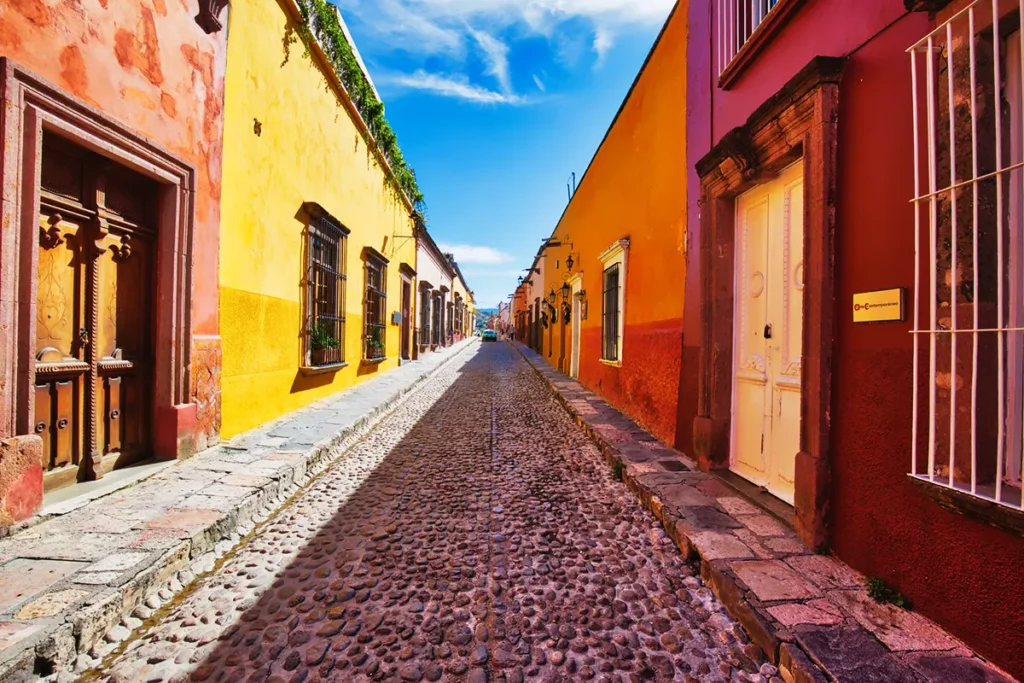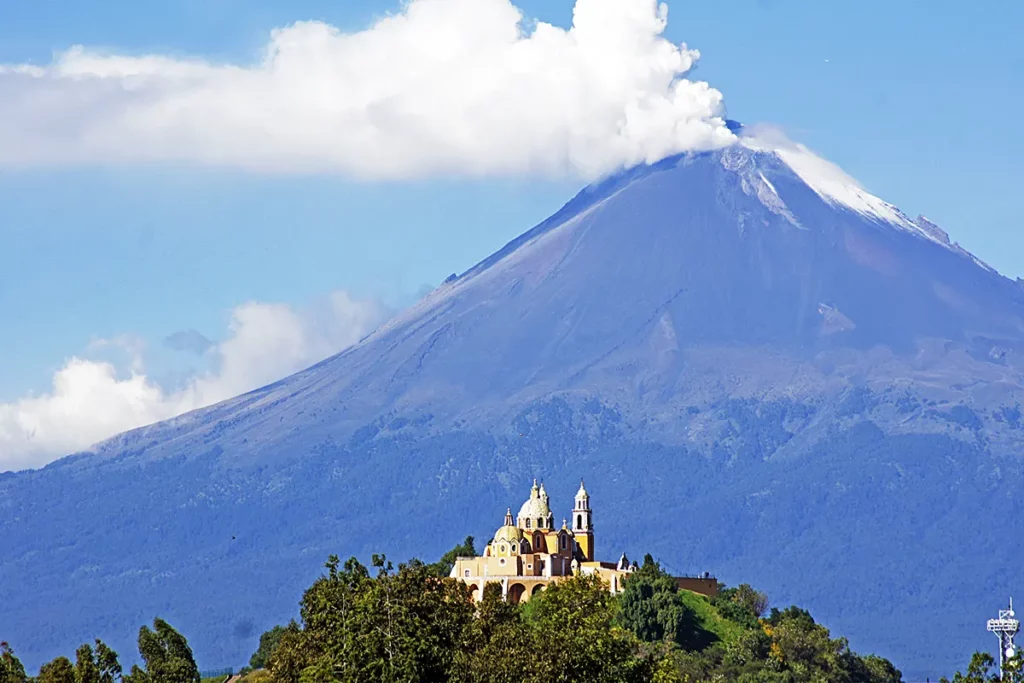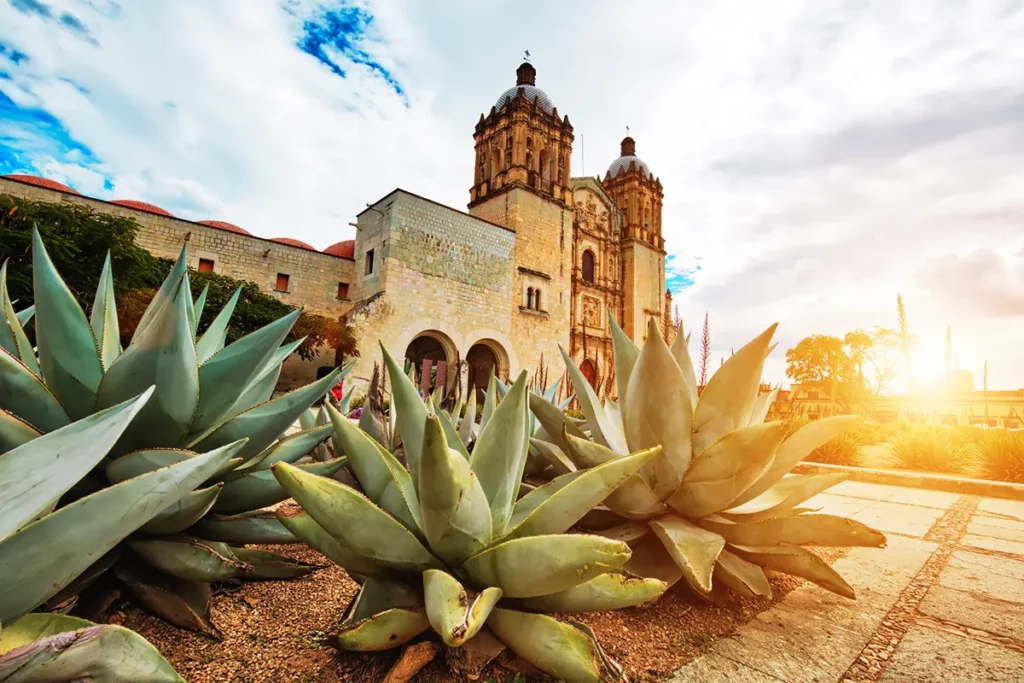
Mexico is the largest Spanish-speaking country in the world, but its 32 states are home to plenty more languages. In total, 294 languages are spoken in Mexico, including a huge 284 indigenous languages. Aside from Spanish, which other Mexican languages do you know? Join us in learning about a few more of them!
What language do people speak in Mexico?
As it turns out, Mexico has no official language – much like the US, in fact! Due to colonisation, Spanish operates as the de facto national language, though, and is spoken by over 99% of the population.
The Mexican government also recognises another 63 indigenous languages that are still spoken in their communities. This includes languages like Nahuatl, Mayan, Mixtec… Of course, this also means that around 220 languages are not recognised, despite being indigenous to Mexico and having speakers today.
Languages of Mexico
| Language | Speakers in Mexico |
|---|---|
| Nahuatl | 1,650,000 |
| Yucatec Maya | 775,000 |
| Tzeltal | 589,000 |
| Tzotzil | 550,000 |
| Mixtec | 527,000 |
| Zapotec | 491,000 |
| Otomí | 299,000 |
| Totonac | 256,000 |
| Mixe | 140,000 |
| Zoque | 74,000 |

Spanish
Some Mexican Spanish words have their origins in Nahuatl, Mayan, or other indigenous Mexican languages. This includes words like ‘guajolote’ (turkey; you might also hear ‘pavo’ outside of Mexico) and ‘jitomate’ (tomato; ‘tomate’).
Mexican Spanish is the mother tongue of 93.8% of the Mexican population, but over 99% of the population speaks it to some degree. Still, it has been influenced to some degree by the indigenous languages it has come into contact with and has influenced them in turn.
This can be seen in certain vocabulary choices, as well as in pronunciation. Mexican Spanish has absorbed many words that contain the sounds /tz/ or /tl/, which are present in many indigenous languages in the country.
Nahuatl is the main indigenous language to have influenced Mexican Spanish – and some of these borrowings, such as āhuacatl (‘avocado’), chocolātl (‘chocolate’), and tomatl (‘tomato’), have been passed into English via Spanish, as well. This influence is sadly no longer growing, as new words are now moving from Spanish into Nahuatl, rather than the other way around.
Like many languages around the world, Mexican Spanish is increasingly being influenced by English. English is the most studied foreign language in Mexico and the third most spoken after Spanish and the indigenous languages are all taken together.

Nahuatl
Some words in English that originally come from Nahuatl include ‘avocado’, ‘chocolate’, ‘coyote’, ‘axolotl’, and ‘tomato’.
The term Nahuatl refers to a group of languages that make up part of the Uto-Aztecan family. These varieties are spoken by almost 1.7 million Nahua people, most of whom live in Central Mexico. Nahuatl is recognised as a lengua nacional in this region.
Nahuatl has been spoken in Mexico since at least the 7th century CE and is considered to be the language of the Aztecs and Mexica. Their influence caused the variety of Nahuatl that was spoken by people living in Tenochtitlan (now the historic centre of Mexico City) to become a prestige language in Mesoamerica.
In the 16th and 17th centuries, Nahuatl became a literary language when the Latin alphabet was introduced. There was a pre-Columbian writing system, but this didn’t reflect the full vocabulary in the way other scripts – such as the Maya Script – did, meaning that Aztec writing was meant to be told rather than read. After the adoption of the Latin alphabet, many chronicles, grammars, works of poetry, administrative documents, and codices were written in the language. The early literary language that was based on the Tenochtitlan variety is now called Classical Nahuatl.
There are considerable differences between Nahuatl varieties, and some are not mutually intelligible. All have been influenced by Spanish to varying degrees.
Some other words in English that come from Nahuatl include ‘chayote’ (a plant that was first cultivated in Mexico and Honduras), ‘chilli’, ‘chipotle’, ‘atlatl’ (a spear-throwing lever), and ‘peyote’ (a small cactus that contains psychoactive alkaloids).

Yucatec Maya
The word for ‘sun’ is ‘k’iin’, which also means ‘time’ and ‘day’. This is because the Ancient Maya used the sun to measure the passage of time.
Yucatec Maya, also known as maaya t’aan, is a Mayan language spoken in the Yucatán Peninsula and northern Belize. In total, there are around 800,000 total speakers of the language, with 775,000 of them in Mexico.
It is part of the Mayan language family, and all languages in this family are thought to have originated from an ancestral language that was spoken some 5,000 years ago. This language is known as Proto-Mayan.
Yucatec Maya is one of only three Mayan languages – the others being Uspantek and one dialect of Tzotzil – have developed tone. It has two tones: high and low. On long vowels, Yucatec Maya speakers also use a creaky voice sound (laryngealisation or vocal fry), which is where the vocal folds compress tightly and the speaker makes a low, scratchy sound that occupies the vocal range below the common vocal register.
In pre-Columbian times, Maya was written using the Maya script. The earliest inscriptions that are identifiably Maya date to the 3rd century BCE in Guatemala and the Maya glyphs are the only Mesoamerican writing system that has been substantially deciphered. Nowadays, Maya is written using the Latin alphabet.

Mixtec
The differences between the Mixtec varieties are typically considered to be similar to the differences between languages in the Romance language family.
The Mixtec languages belong to the Mextecan group of the Oto-Manguean language family, and these different varieties are spoken by over 500,000 people. There may be anywhere from 12 to 53 Mixtec languages as there are many regional differences and it depends on how you classify a language. They are primarily spoken in the region known as La Mixteca, which is shared by the states of Oaxaca, Puebla, and Guerrero.
Mixtec speakers developed their own writing system and the texts from ancient manuscripts (codices) that have survived are one of the best sources of knowledge about the pre-Hispanic culture of the Oaxacan region. However, nowadays, these languages are primarily spoken in informal settings like the home, so it is hard to establish an alphabet. Also, because the different varieties are quite fragmented, texts may not be comprehensible from speaker to speaker.

Zapotec
The earliest example of Zapotec writing can be found on a Mexican landmark called Monument 3, which is a doorstep to a ceremonial structure, and is dated before 500 BCE. The glyphs or symbols on there depict drops of blood and a possible calendar day name – ‘1 Earthquake’.
Zapotec refers to a group of around 50 closely related indigenous Mesoamerican languages that make up a main branch of the Oto-Manguean language family. In total, there are almost 500,000 speakers across the different varieties, with the majority living in the Mexican state of Oaxaca. Many varieties of Zapotec are mutually unintelligible with each other.
One of the most well known Zapotec languages is Isthmus Zapotec, also known as Juchitán Zapotec, which is spoken by around 85,000 people in Tehuantepec and Juchitán de Zaragoza (Oaxaca). Despite being an ancient language, The alphabet used to write Isthmus Zapotec today was founded in the 1950s.

What does the future hold?
There has already been a huge language shift in Mexico due to colonisation, which is why practically the entire population speaks Spanish today. Spanish is used in every domain, putting pressure on the many indigenous languages of the country, even those that have a large number of speakers and government support.
Of course, speakers of various indigenous languages are working hard to preserve and promote the languages they speak. Many language revitalisation strategies have been implemented to try and create a language shift that might help generations pass them on, as well as attract new speakers who are interested in learning the indigenous languages of Mexico.
If that’s something that interests you, then why not give Yucatec Maya a try on the uTalk app? Subscribe today, save 40%, and discover the beauty of Mexico’s indigenous languages with us.
Happy language learning!

Marvelous. Thank you so much!